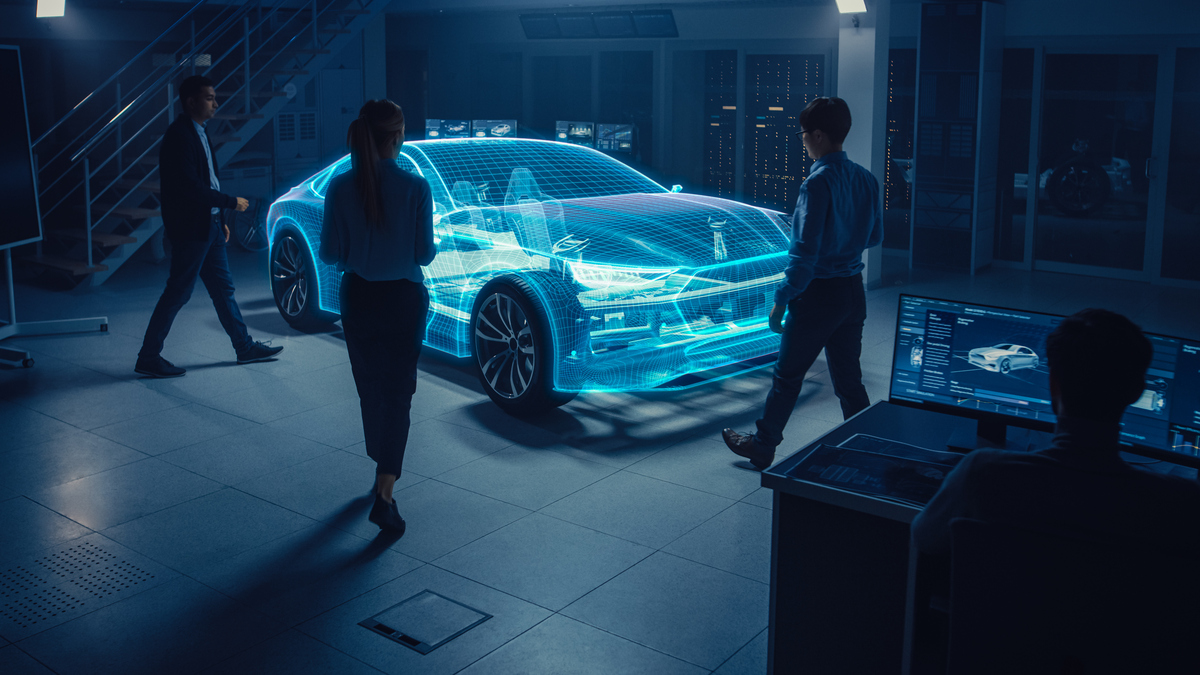The Evolution of Automotive Embedded Systems: A 40-Year Journey with QNX

The Foundations: Pre-1970s to 1980s
The Early Era of Automotive Electronics
Before the 1970s, vehicles primarily relied on mechanical systems, with only rudimentary electronic controls in place. The introduction of initial electronic components, such as alternators and voltage regulators, marked the genesis of automotive electronics. Though these early systems possessed limited capabilities, they laid a crucial foundation for future innovations.
The Revolutionary Shift to Microcontrollers
The 1970s heralded a groundbreaking transformation with the advent of microcontrollers. These compact, integrated circuits combined a central processing unit (CPU), memory, and input/output (I/O) ports on a single chip, fostering the development of more sophisticated electronic control systems. General Motors led the charge by implementing microcontroller-based Engine Control Units (ECUs), optimizing engine performance and fuel efficiency.
Emergence of Early Safety and Comfort Features
The introduction of microcontrollers also facilitated the creation of initial safety and comfort enhancements. Antilock Braking Systems (ABS) emerged to prevent wheel lock-up during braking, while Body Control Modules (BCMs) managed essential functions such as lighting, climate control, and security systems, thereby improving vehicle comfort and convenience.
The Ascension of Embedded Software: 1980s to 2000s
The Launch of QNX
In the 1980s, QNX Software Systems made its mark by introducing its RTOS, quickly gaining recognition within the automotive industry. The microkernel architecture, real-time performance, and unwavering reliability of QNX positioned it as an ideal platform for critical automotive applications.
Commitment to Functional Safety and Reliability
The QNX RTOS was meticulously crafted to adhere to rigorous functional safety standards, including ISO 26262. Its fault-tolerant time partitioning and health monitoring capabilities ensured that mission-critical functions could operate reliably, even in the face of potential failures.
Pioneering Infotainment and Connectivity
The 1990s witnessed the rise of advanced infotainment systems, with QNX playing a vital role in their development. The real-time capabilities of the QNX RTOS facilitated the seamless amalgamation of audio, video, navigation, and communication features, redefining the in-car entertainment paradigm. Concurrently, telematics systems powered by QNX provided real-time traffic updates, remote diagnostics, and emergency response services.
The Integration of IoT: 2000s to 2010s
The Advent of Connected Vehicles
The 2000s heralded the rise of the Internet of Things (IoT) within automotive applications, leading to a new era of connected vehicles. The QNX RTOS enabled the integration of IoT technologies, allowing vehicles to communicate effectively with one another and with infrastructure, enhancing both safety and convenience through Vehicle-to-Everything (V2X) communication.
Advancements in Advanced Driver Assistance Systems (ADAS)
The evolution of ADAS technology during this period exemplified the significant advancements in automotive safety and automation. By leveraging the real-time capabilities of the QNX RTOS, vehicles could now process and integrate data from an array of sensors, cameras, and radar systems, leading to the implementation of features such as adaptive cruise control and automatic emergency braking.
Predictive Maintenance and Over-the-Air Updates
IoT-enabled sensors revolutionized vehicle health monitoring, predicting potential failures before they manifested. Additionally, QNX support for over-the-air (OTA) updates empowered manufacturers to remotely deploy essential software updates, rectify issues, and introduce new features without necessitating dealership visits.
Modern Innovations: 2010s to Today
The Quest for Autonomous Driving
Recent years have seen a concentrated effort towards developing autonomous driving technologies. The QNX RTOS plays a crucial role in supporting these systems, adeptly processing vast data volumes from cameras, LiDAR, and radar to navigate complex driving environments. Advanced sensor fusion algorithms are essential for aggregating data from multiple sources, thereby providing a comprehensive understanding of the vehicle's surroundings.
Enhanced Cybersecurity Measures
As vehicles become increasingly connected, the importance of cybersecurity rises exponentially. QNX's secure kernel and robust encryption protocols ensure the integrity and confidentiality of automotive systems. Additionally, the capability to securely conduct OTA updates is critical for maintaining vehicle security throughout their lifecycle.
The Evolution of V2X and Smart City Integration
V2X communication technology has advanced significantly, allowing vehicles to share real-time information about road conditions, traffic, and hazards. This enhanced situational awareness directly contributes to improved safety outcomes. The QNX RTOS supports these emerging communication protocols, enabling the development of smart city infrastructure that interacts seamlessly with connected vehicles.
Future Trends and Innovations
Envisioning Full Autonomy (Level 5)
The trajectory of automotive technology is leading towards full autonomy, where vehicles will operate independently across all environments. Achieving this ambitious goal demands highly sophisticated embedded systems capable of processing and analyzing extensive data sets in real-time. The QNX RTOS stands as a foundational pillar in this endeavor, given its unparalleled reliability and performance.
Advancing AI-Powered Security
In an era where cybersecurity is paramount, incorporating artificial intelligence (AI) and machine learning into automotive security frameworks will be essential. AI-driven security systems can facilitate real-time threat detection and response, preserving the safety and integrity of connected vehicles. The QNX RTOS must evolve to seamlessly integrate advanced AI capabilities to proactively address emerging cybersecurity threats.
Developing Quantum-Resistant Algorithms
As quantum computing technology progresses, the development of quantum-resistant cryptographic algorithms becomes imperative to safeguarding the longevity of automotive systems. QNX's steadfast commitment to security will play a critical role in the implementation of these cutting-edge algorithms.
Conclusion
The transformation of automotive embedded systems over the last 40 years is characterized by monumental technological advancements, driven by the integration of sophisticated embedded software. QNX Software Systems has been a pivotal force in this transformation, delivering a robust, secure, and reliable RTOS powering critical automotive applications. From the initial forays into microcontrollers and basic electronic systems to the current era of interconnected, autonomous vehicles, QNX's influence has been instrumental in shaping the future of automotive technology. Looking forward, the continual advancements in full autonomy, AI-driven security, and quantum-resistant algorithms promise to uphold this legacy, helping to ensure that vehicles remain safe, efficient, and intelligent.
Related Reading
